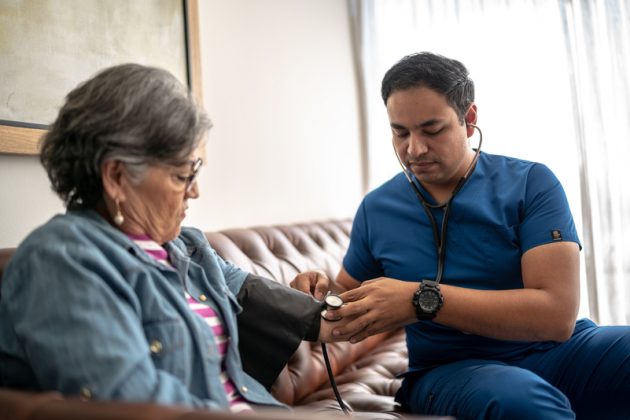
A newly released report by the U.S. Department of Health and Human Services (HHS), through the Centers for Medicare and Medicaid Services (CMS), issued a proposed rule that seeks to establish staffing requirements for nursing homes. This includes – for the first time ever – national minimum nurse staffing standards to ensure safe and high-quality care for the more than 1.2 million residents living in nursing homes.
While this proposed ruling could create backlash – drive up rates for already-scarce nurses and over time cause less expansion or removal of nursing homes (CMS reported a fall of 97 nursing homes in the U.S. from January to July 2023, and the U.S. has at least 600 fewer homes than it did six years ago) – it does make home-based services more relevant. And keeping our adult population at home is something they desire. A March 2023 survey by the U.S. News & World Report reported 93 percent of adults age 55 and older agreed that aging in place – the ability to live in one’s own home and community safely and independently – “is an important goal for them.”
The draw of home
What makes aging in place so appealing? Research shows aging in place has many benefits for older adults, the most important of which is that they can remain independent in comfortable, familiar surroundings, including their own homes and communities. Living at home enables older adults to be close to the family, friends, and neighbors they depend on for support. Older adults can utilize familiar community services, such as libraries, shopping malls, parks, recreational programs, and community centers. Remaining involved in the community while interacting with various age groups helps older adults remain engaged and physically active, which can have a positive impact on health outcomes. Social engagement can also alleviate loneliness, which is important as “approximately 50 percent of older adults are at risk of social isolation and one-third will experience some degree of loneliness later in life,” according to a journal article in BMC Public Health.
For the older population to fully age in place, however, services must be instilled at home that promote a high quality of life.
Solutions to address aging at home
An in-home medical alert system that can be worn or carried allows older adults to call a family member, friend, or emergency response service if they need assistance. Family members can set up in-home alarm systems to monitor temperature and lighting in the home as well as when a loved one gets out of bed, opens the refrigerator, or uses the oven. They can also monitor when caregivers arrive and leave.
Alleviating the healthcare system
As healthcare legislation constantly changes, the focus needs to be more aligned with what can be done at home to keep the older population safe and healthy. A focus on the home encourages preventive health interventions in a desirable, comfortable environment and alleviates our already delicate healthcare system. After all, there will be 77 million people age 65 and older in the U.S. by 2034, according to the U.S. Census Bureau, and we must equip them with services that allows them to thrive.
Learn More
To get more information on the ways Modivcare can help address these challenges and others among your members, contact us today.
Additional sources:
https://www.healthyagingpoll.org/reports-more/report/older-adults-preparedness-age-place
https://www.usnews.com/360-reviews/services/senior-tech-aging-in-place-survey
https://www.cdc.gov/healthyplaces/terminology.htm
https://www.cdc.gov/aging/publications/features/lonely-older-adults.html
https://crr.bc.edu/briefs/what-level-of-long-term-services-and-supports-do-retirees-need/
https://www.mayoclinic.org/healthy-lifestyle/caregivers/in-depth/senior-health/art-20044699 https://khn.org/news/what-the-2020s-have-in-store-for-aging-boomers/
https://www.wsj.com/articles/how-covid-19-will-change-aging-and-retirement-11605452401
https://www.census.gov/newsroom/press-releases/2018/cb18-41-population-projections.html
The Upheaval at America’s Disappearing Nursing Homes, in Charts - WSJ
SHARE
Subscribe to receive our latest blog articles delivered straight to your inbox.
RESOURCES